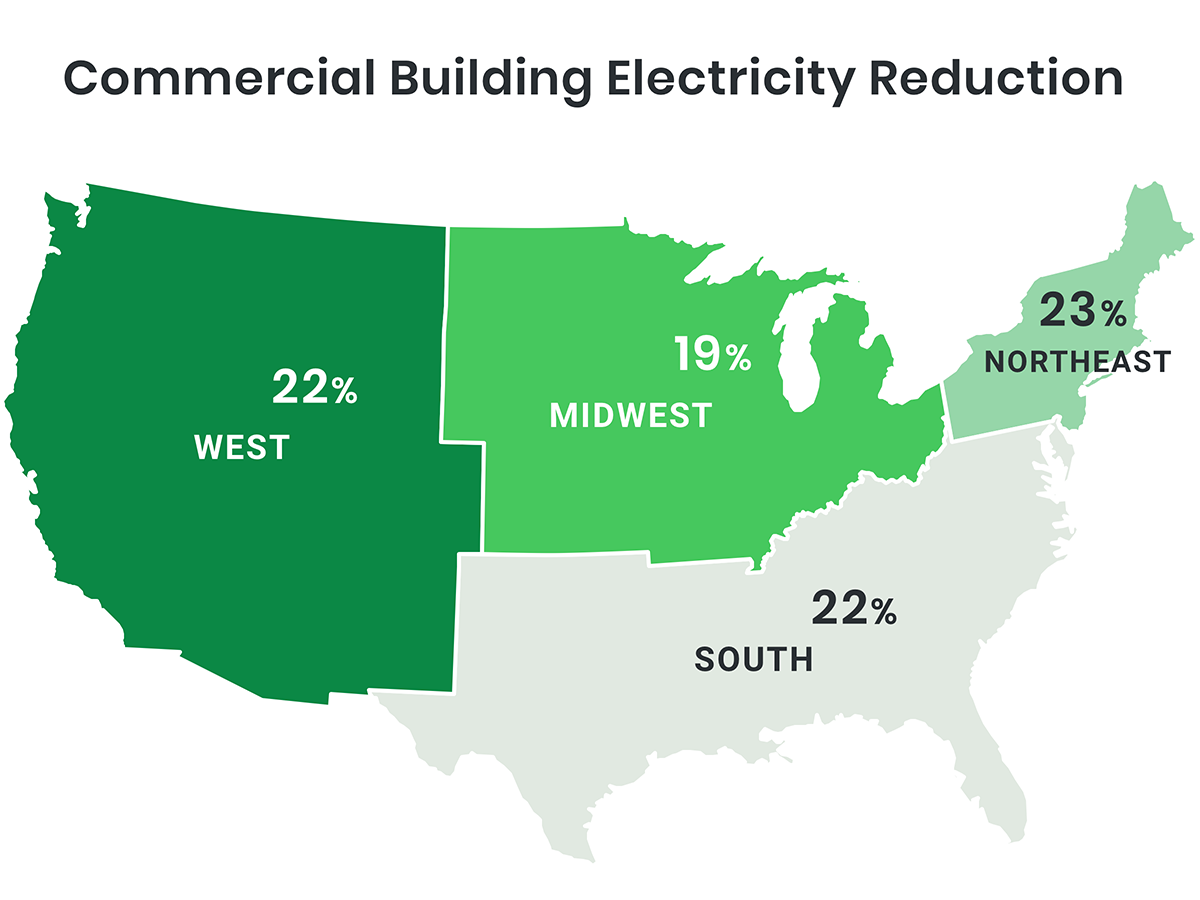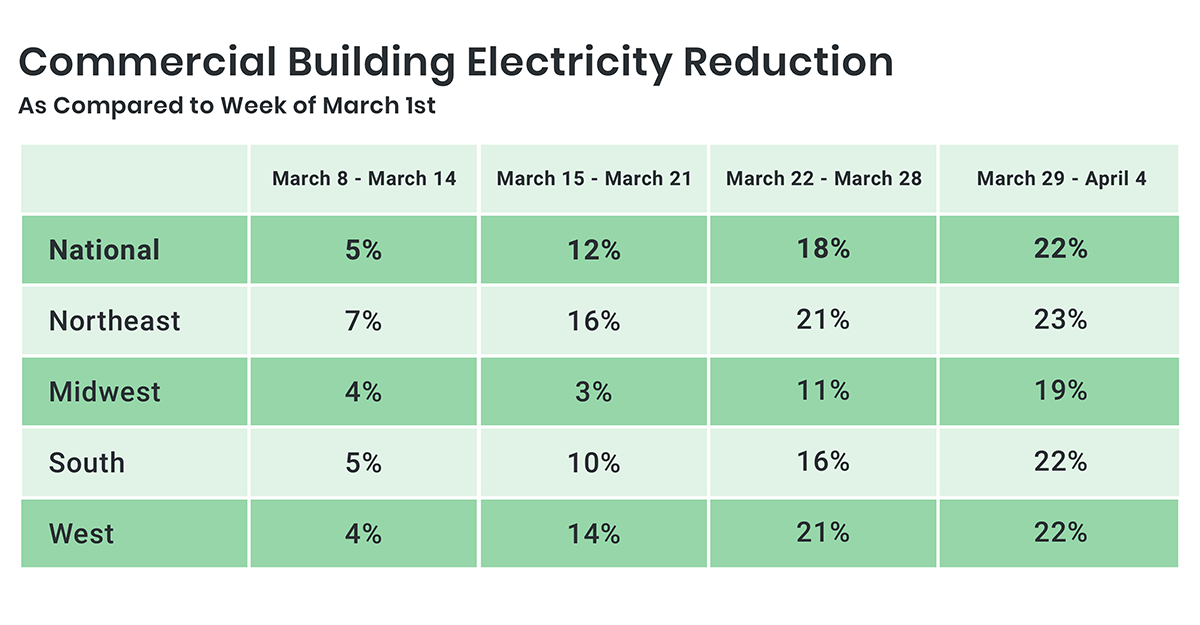Office Electricity Consumption Plummets Following Pandemic Restrictions
With millions of people working from home, demand for power fell dramatically in March.
Three weeks after millions of Americans were urged to work from home while following social distancing guidelines as the country—and the whole world—fights to contain the spread of the novel coronavirus, the pandemic’s impact on commercial electricity usage is beginning to surface.
Despite the unprecedented expansion of teleworking, most office buildings remain active—albeit at very low occupancy levels—and electricity systems need to run in order to prevent degradation and ensure they can increase capability without a hitch when businesses resume in-office operations. But how is the COVID-19 pandemic affecting electricity usage in office buildings across the nation?
READ ALSO: How to Prevent Spreading COVID-19 in Office Buildings
Hatch Data, a commercial real estate software company, analyzed building data streaming from utility meters and various in-property equipment over the past four weeks for more than 400 million square feet of occupied space across all regions as the country battled to mitigate the pandemic’s economic impact. The company then compared the findings to the week of March 1, prior to the public health crisis, and identified some important trends in commercial energy usage.
Lockdown measures slow down usage
On a national level, office building electricity consumption decreased 22 percent over the four weeks up to April 4, according to Hatch Data. The declines largely follow the timing of stay-at-home orders, with occupancy dropping the fastest in states where businesses were quick to adopt telework models, prompting operators to adjust electricity usage and building operations.
The Northeast recorded the biggest decline, 23 percent, as New York Governor Andrew Cuomo urged all nonessential businesses across the state to stay at home, effective March 22. Two weeks later, on April 6, Cuomo announced that the order was extended through April 29: “Public health is our first concern,” Cuomo said during his daily televised address. As of Monday, COVID-19 cases in the Northeast had topped the 200,000 mark, according to data compiled by the Johns Hopkins University Center for Systems Science and Engineering.
Office electricity consumption in the West fell 22 percent, Hatch Data shows. California Governor Gavin Newsom issued a statewide stay-at-home order for its 40 million residents on March 19, adding mounting pressure on the commercial real estate industry nationwide. In Washington, where the first confirmed case in the U.S. was announced on January 21, the stay-at-home order took effect on March 23.
In the South, commercial electricity consumption decreased 22 percent during the four weeks leading to April 4. On Monday, April 6, South Carolina Governor Henry McMaster issued a mandatory “Home or Work” order, urging all residents and visitors to stay at home except for essential reasons and take every possible precaution to avoid potential exposure.
In the Midwestern states, consumption dropped 19 percent. Michigan Governor Gretchen Whitmer, who issued an executive stay-at-home order on March 23, plans to extend the restrictions as the coronavirus continues to spread across the state.
Hatch Data anticipates it could take around two weeks for energy consumption declines reduction to be seen in the remaining eight states that are yet to impose similar restrictions.









You must be logged in to post a comment.